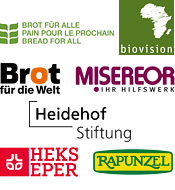News
02.05.2014
Dirty Dozen List: The Most Pesticide-Laden Fruits And Veggies in the US

Environmental Working Group (EWG) has just released an updated list identifying the most pesticide-laden and cleanest conventional produce. To compile the “2014 Dirty Dozen“ and the “Clean 15“ lists, scientists focused on 48 fruits and vegetables. Conventionally-grown apples topped the list of most pesticide-contaminated produce: 99% of apple samples tested positive for at least one pesticide residue, mainly because of chemicals applied to the crop after harvest to prevent them from scalding during storage. Other fruits and vegetables on the negative list are strawberries, grapes, celery, peaches, spinach, cucumbers, cherry tomatoes and potatoes. Single samples of celery, cherry tomatoes, imported snap peas, and strawberries tested positive for 13 different pesticides apiece; a single grape even for 15 pesticides. Kale, collard greens, and hot peppers were frequently contaminated with insecticides which are a particular threat to human health. 65% of all samples analyzed tested positive for pesticide residues. The Clean Fifteen, on the other hand, lists conventional produce with the lowest pesticide levels. Avocados were the cleanest, with only 1% of samples showing detectable pesticides, followed by sweet corn, pineapples, cabbage, frozen sweet peas, onions, asparagus, mangoes, papayas and kiwi. The ranking is based on an analysis of 32,000 samples tested by the US Department of Agriculture and the Food and Drug Administration. EWG analysts used six metrics including, the total number of pesticides detected on a crop and the percentage of samples tested with detectable pesticides. “The lists help people find conventional fruits and vegetables with low concentrations of pesticide residues,” said Sonya Lunder, lead author of the report. “If a particular item is likely to be high in pesticides, people can go for organic.” But the report also charges the U.S. Environmental Protect Agency with failing to comply with legislation designed to warn Americans of the risk of eating foods containing chemical pesticides.
16.04.2014
Caritas Calls on EU to Support Agroecological Small-scale Farming
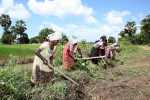
The European Union should support the eradication of world hunger as a priority for the post-2015 agenda, and push for a clear definition of a “Zero Hunger” goal, addressing all the root causes of hunger. This is one the key message of a new report Caritas Europa presented at the European Parliament in Strasbourg on Tuesday. The report calls on the EU to take urgent action in six areas: The right to food; small-scale agriculture; climate change; nutrition resilience, and policy coherence for development. It includes several recommendations on how to create sustainable food systems and how the EU can champion the fight against world hunger. First of all, decision makers should mainstream the right to food as a priority in all policies with an impact on agriculture and food security. In addition, Caritas Europe calls on the EU and its member states to support agro-ecological small-scale farming activities. No funding should be allocated to high-input agricultural activities that destroy eco-systems. The report further recommends that the EU regulate and monitor European private sector investments in developing countries’ agriculture with a view to prioritizing the empowerment of smallholders and their access to productive resources. Attention should also be paid to the multifunctionality of agriculture by addressing food security challenges not only from the perspective of food production but also by considering the socio-cultural, environmental and economic dimensions of agriculture. According to Caritas, particular attention should be given to preserving traditional knowledge and enhancing farmers’ skills and knowledge on biodiversity, with a special focus on women farmers, who produce more than half of the food in the world.
11.04.2014
Urban Agriculture is Gaining Ground in Latin America
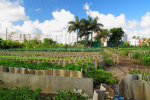
According to a new report published by the Food and Agriculture Organization (FAO), urban and peri-urban agriculture is widespread in Latin America and the Caribbean but it needs the support of government, from national to local levels, to realise its full potential. In 2009, representatives of ministries of agriculture, research institutes, NGOs and international organisations gathered in Medellín, Colombia, to develop strategies for reducing urban poverty and food insecurity across the region. They called for the incorporation of urban and peri-urban agriculture (UPA) into public policies. Five years later, the report looks at the progress made towards creating 'greener cities'. It is based on a survey in 23 Latin American and Caribbean countries and data on 110 cities and municipalities. The report found that UPA is widespread in the region and is practised, for example, by 40% of Cuban households and 20% of Guatemalan families. In Bolivia’s major cities and municipalities, 50,000 families are food producers. Urban agriculture ranges from backyard vegetable gardening to the raising of small animals for eggs and meat; from school gardens to growing vegetables in containers. But only 12 of the 23 countries have national policies that promote UPA. Cuba’s policy dates back to 1997, when the government decided to promote urban agriculture nationwide. Agriculture is now practiced on an area of roughly 33,500 hectares, including 145,000 small farm plots and 385,000 backyard gardens. In Havana, the “greenest” capital in the region, 90,000 residents are engaged in some form of agriculture. In 2013, UPA produced there some 6,700 tonnes of food for almost 300,000 people in schools, public health centres and hospitals.
04.04.2014
New Study: 24% of Europe's bumblebees at risk of extinction

Nearly a quarter of Europe's bumblebee species could become extinct, according to a recent study examining all of the 68 bumblebee species that occur in Europe. The study, which is part of the Status and Trends of European Pollinators (STEP) project and the European Red List of pollinators, both funded by the European Commission, stresses that habitat destruction, pesticide contamination, agricultural intensification and climate change threaten Europe’s bumblebees. As much as 46% of bumblebee species in Europe have a declining population, 24% face extinction. “We are very concerned with these findings. Such a high proportion of threatened bumblebees can have serious implications for our food production,” said Ana Nieto, coordinator of the study and European Biodiversity Officer of the International Union for Conservation of Nature (IUCN). Three of the five most important insect pollinators of European crops are bumblebee species. Together with other pollinators, bumblebees contribute more than 22 billion Euros to European agriculture per year. According to IUCN, protecting bumblebee species and habitats, restoring degraded ecosystems and promoting biodiversity-friendly agricultural practices will be essential to reverse the negative trends in European bumblebee populations.
02.04.2014
Roundtable Calls for SDG on Sustainable Agriculture, Food Security and Nutrition

A High-level Roundtable, which brought together representatives from governments, UN agencies, civil society, farmers, and the private sector on 27-28 March in New York, has called for a Sustainable Development Goal (SDG) on “Sustainable Agriculture, Food Security and Nutrition.” Such a goal and the broader post-2015 agenda should address five SHIFT elements: Small-scale food producers are empowered; Hunger and malnutrition are addressed in all forms; Inclusiveness in decision-making is achieved; Food systems are sustainable and productive; and Trade policies are reshaped and food price volatility is mitigated. The message from the High Level Roundtable also includes seven proposed targets to be achieved by 2030, as well as a list of further issues which should be included in other focus areas of the post- 2015 agenda, such as climate, biodiversity, and gender equality. Participants agreed that the Committee on World Food Security (CFS) can best provide guiding and monitoring of the implementation of the post-2015 agenda in the field of food and nutrition security and sustainable agriculture and food systems. The event was hosted by the Government of Benin, Biovision Foundation, and the Millennium Institute. The agreed recommendations from the meeting will be streamlined and then submitted to the co-chairs of the UN General Assembly's Open Working Group (OWG) on Sustainable Development Goals.
29.11.2013
Argentina: Brutal attack on anti-Monsanto activists
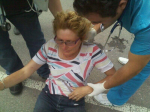
In Argentina, a camp protesting the construction of a Monsanto seed plant in Cordoba province was violently attacked and at least 20 people were injured. On Thursday morning, a gang of 60 people arrived in a bus at the campsite in Malvinas Argentianas, destroyed tents, set fire to parts of the camp and attacked anti-GMO activists with sticks and stones. Several people were injured, among them Goldman Environmental Prize winner Sofia Gatica, who spearheads the protests and was sent to hospital with serious head injuries. On Monday, she had already been beaten up in broad daylight, just a few days after receiving a death threat on a bus. A man had a gun pointed at her and said: “There are several ways of dying. Stop with Monsanto or I’m going to end your life and spill your brains all over Malvinas Argentina.” The activists have been camping opposite the Monsanto grounds since September to prevent the construction of a corn processing plant by blocking the entry of building material and fuel. The attackers are allegedly linked to the Construction Workers Union (UOCRA) since workers are not able to continue their work due to the protests. Monsanto executives condemned the violence but accused the protesters of destroying workers’ cars. The activists denied these claims and accused the police of doing nothing to stop the violent attack.
18.11.2013
Report calls for Reduction in the Use of Antibiotics in Farming
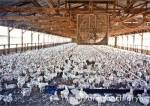
A new study has linked the growing crisis of antibiotic-resistance to the overuse of antibiotics in agriculture. The paper, published ahead of the European Antibiotics Awareness Day on 18 November in the medical journal The Lancet, calls for immediate action in human and veterinary medicine. The report reveals that in some countries huge amounts of antibiotics are used in agriculture, aquaculture, and intensive farming - up to four times the amount used in human medicine. The scientists claim that any increase in antibiotic resistance in farm animals is likely to spread to humans since there is little separation of the types of antibiotic used in human beings and animals. The report recommends a worldwide ban on the use of antibiotics in healthy animals to promote growth or prevent disease. “The common goal should be to preserve the effect of antimicrobials for future generations of human beings, but also for animals. Antimicrobials should only be used when needed”, the report says. To this end, “health-orientated systems for rearing of animals” should be developed which do not rely on high levels of antibiotic use. The Alliance to Save Our Antibiotics, a campaign by the Soil Association, Compassion in World Farming and Sustain, welcomed the report. Tom MacMillan, director of innovation at the Soil Association, said: “This startling new report shows that the routine use of preventative antibiotics in farm animals is something that needs to be phased out for the good of both animals and humans.”
07.11.2013
UK Food waste down 21% - but six meals a week thrown away

Good News: Since 2007, avoidable household food waste in the United Kingdom has been cut by 21%. According to a new report published today by the Waste and Resources Action Programme (Wrap), avoidable food waste has been reduced to 4.2 million tonnes, saving consumers £13 billion a year. “The UK is leading the way in tackling food waste and the 21% cut is a terrific achievement by millions of people who have taken action, saved money and helped safeguard our natural resources. However, there is so much more to go for and I believe we should be going for it“, said Dr Liz Goodwin, WRAP Chief Executive Officer. The average UK household still throws away the equivalent of more than 300 meals per year, almost half of this is going straight from the fridge into the bin. The top three foods the Britons are throwing away uneaten are bread, potatoes and milk. The equivalent of 24 million slices of bread, 5.8 million potatoes and 5.9 million glasses of milk are wasted daily. Every year, almost 86 millionen chickens end up in the bin. Wrap attributes the reduction in food waste to campaigns and changes to packaging, including clearer date labels by retailers. Consumers are better aware of how to store their food and many households WRAP interviewed earlier this year said they were now making better use of their leftovers. Another reason is the increase in food prices. Retailers are also becoming aware of the problem: In October, the supermarket chain Tesco announced to remove “display until“ dates from fresh fruit and vegetables and to use smaller cases to help customers reduce the amount they are wasting.
04.11.2013
Leaked IPCC report: Climate Change to threaten Food Supply

Climate change will pose sharp risks to the world’s food supply in coming decades, according to a leaked draft of a forthcoming IPCC (Intergovernmental Panel on Climate Change) report, writes the New York Times. The scientists found that climate change could reduce agricultural production by as much as 2 per cent each decade for the rest of this century, while global population is expected to grow to over 9 billion in 2050 and crop demand could rise as much as 14 per cent each decade. Climate change will most severely impact yields for wheat, rice and maize in tropical regions. With temperature increases of about 2 degrees above preindustrial level, “differences between crop production and population-driven demand will become increasingly large in many regions, posing significant risks to food security even with adaptation”, the draft report finds. According to the New York Times, “the warning on food supply is the sharpest in tone the panel has issued”. While its previous report, in 2007, warned of potential losses, scientists were still optimistic that gains in production at higher latitudes could make up for the losses in agricultural output in tropical regions. The IPCC draft also predicts negative impacts on water supply, food security and agricultural incomes in rural areas. Rising food prices will severely hit the rural poor, such as female-headed households and those with limited access to education. The leaked draft is part of the IPCC’s Fifth Assessment due to be published in March. An IPCC spokesman described it as “work in progress” which is “likely to change”.
31.10.2013
Brazil: Land Grab in Pernambuco under scrutiny
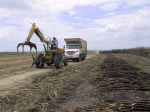
In Brazil, a case of land grabbing in the state of Pernambuco will come under scrutiny by the Federal Public Ministry in reaction to an Oxfam report published earlier this month. The Brazilian State prosecutor for the State of Pernambuco, Silvia Regina, announced last week that the Federal Public Ministry will launch an investigation. The Oxfam report “Nothing sweet about it” describes the growing threat of land grabs in the sugar industry, highlighting the case of a fishing community on the Sirinhaem estuary in Brazil. In 1998, they were violently evicted from their land to make way for the Usina Trapiche sugar mill which, according to the report, provides sugar to Coca-Cola and PepsiCo. The prosecutor convened a public hearing to assess delays since 2009 in the creation of an Extractive Reserve on the land that would enable the community to return to the mangroves where they fished and grew food. “Action to restore local people’s access to their land is long overdue,” said Gabrielle Watson, campaign manager in Brazil for Oxfam’s Behind the Brands initiative. The report also shed light on the case of the Guarani-Kaiowá indigenous community in the state of Mato Grosso do Sul whose land was occupied by a sugar plantation supplying a mill owned by Bunge. Much of the Guarani-Kaiowá’s land in the south-western state has been converted to soy, cattle and sugar cane farms due to the expansion of agribusiness, with sugar cane cultivation tripling between 2007 and 2012. Indigenous peoples are among the groups most severely affected by agro-industry. This is confirmed by a report published on Tuesday by a United Nations expert body which calls for action to prevent the violation of indigenous peoples’ rights as a result of business-related activities.
- Oxfam International: Brazilian State prosecutor to investigate land grab highlighted by Oxfam
- Report: Sugar Rush: Land rights and the supply chains of the biggest food and beverage companies
- Diario de Pernambuco: MPF discute a criação de reservas extrativistas em Pernambuco
- UN expert body urges action to prevent violation of indigenous rights due to business activities
